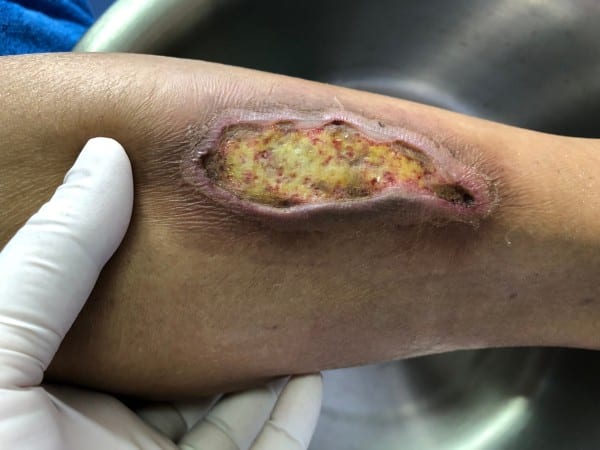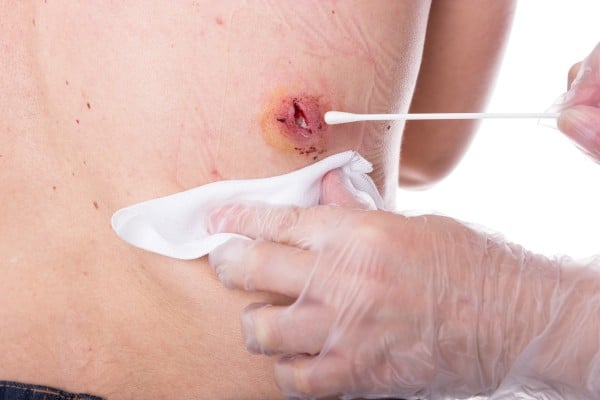How Can You Tell If a Wound Is Infected?
 Wound infection is a condition in which germs (bacteria, viruses, or fungi microbes) invade your wound or the surrounding tissues. These microbes impair the healing process by producing toxic byproducts and competing with cells for oxygen and nutrients. These microbes not only cause local infection and inhibit the closing of the initial wound, but can spread to other parts of the body and cause significant illness.
Wound infection is a condition in which germs (bacteria, viruses, or fungi microbes) invade your wound or the surrounding tissues. These microbes impair the healing process by producing toxic byproducts and competing with cells for oxygen and nutrients. These microbes not only cause local infection and inhibit the closing of the initial wound, but can spread to other parts of the body and cause significant illness.
What are the factors that increase the risk of wound infection?
Local factors that increase the risk of infection in wounds include:

-
Large wound area or depth
-
Degree of chronicity
-
Anatomic location (perineal for example)
-
Presence of a foreign body
-
Dead tissue
-
Type of injury (bites, contaminated trauma site, perforated organ surgery)
-
Degree of contamination after initial wounding
-
Inadequate skin and wound hygiene
-
Poor circulation

How should I treat an infected wound?
Proper care of the skin and wound helps to prevent an infection and can be achieved by keeping the area clean and the wound dressed. Using an antimicrobial skin and wound cleanser with each dressing change supports good wound hygiene and may play a role in infection prevention.
What are the signs and symptoms of infection?
Although most infections can be treated with antibiotics, it is important to know how to recognize an infection early so that treatment can be started as soon as possible. Below are the signs and symptoms of infection that you should look for each time the dressing is changed:
-
General warmth around the wound with spreading redness around the wound in light skin or spreading of a darkening color in more heavily pigmented skin
-
Increased swelling
-
Change in tenderness or new pain at the wound site
-
Abnormal or cloudy drainage from the wound
-
Foul smell from the wound after routine wound cleansing
-
Body chills or fever
-
For individuals with diabetes – high blood glucose (sugar), or trouble keeping blood glucose levels consistent
-
Delayed wound healing – wound healing not advancing as expected over several weeks
If you notice any of these signs or symptoms, please notify your healthcare provider.
For products indicated for the management of surgical wounds, please visit: https://sanaramedtech.com/surgical/




